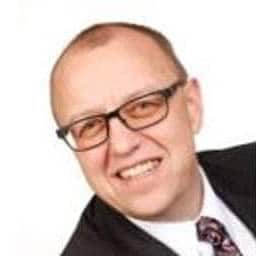Forming hypotheses: The forgotten tool
Expand the table of contents
I have a hypothesis: this post will not only score popularity points.
So why am I writing it? Because I’ve been developing a disruptive feeling for some time, fed by observations with my clients and conversations with female clients, as well as reading posts on X (formerly Twitter) and LinkedIn.
At its core is this: how do we identify what is going wrong in an organisation before actions, workshops or interventions are determined?
In my training as a coach, I learned the following systemic approach:
- Observe,
- form hypotheses,
- set goals,
- plan and implement intervention,
- observe.
In the agile context, the very similar Deming Cycle is often used:
- Plan,
- do,
- check,
- act.
Or :
- Identify your problems,
- test solutions,
- study results,
- implement best solution.
In both approaches, hypotheses are formed before measures are taken to solve the problem.
And here is the Google reality¹:
- “Book Workshop” – 24.0 million hits
- “Workshop methods” – 11.6 million hits
- “Workshop games” – 11.4 million hits
- “Book Hypotheses” – 2.4 million hits
- “Formulating hypotheses” – 671,000 hits
- ” Creating hypotheses” – 132,000 hits
When I scroll through social networks, there are countless suggestions for workshop formats and games, sketchnote suggestions, check ins and check outs. There is no indication of the hypotheses on which they are based or what they are supposed to achieve.
The lived practice of hypothesising in many companies
Somehow, delivering interventions seems much more important and interesting than hypothesising, but why?
Mysterious coach magic that no one wants to share? Forgotten or out of fashion tool? Unattractive to describe compared to sketchnote protocols or photos of walls covered with Post-Its?
When my clients tell me about their experiences with consultants and coaches, one thing comes up again and again: formats or even solutions are determined very quickly, but very rarely is there any discussion about what they are supposed to achieve. Quotas of hours and workshops are offered before the clarification of the assignment has taken place. The presumed connections remain nebulous for the clients.
Especially from agile coaches I read again and again that basically every form of hierarchical leadership is rejected. Reducing hierarchy – replacing positions with roles – self-organisation, just some of the agile “standard solutions” that are then propagated. The first thing that is done in large workshops are games that are supposed to make the advantage of agile approaches visible. Well, hopefully the customer has a problem that fits one of these solutions, because otherwise every problem becomes the nail for which you just have the (agile) hammer in your hand.
To be clear: I am an agility fan and very much appreciate the many advantages of agile methods and organisational models. But just where they “fit” and not fundamentally in every company and every value creation model. In my view, a hypothesis about a problem must appear sufficiently plausible for “agility” to be a solution.
The procedure for forming meaningful hypotheses
What makes a good hypothesis anyway?
I believe that the division into “good” and “bad” is the first dead end on the road to improvement. A hypothesis is always based on assumptions about the future, and the extent to which it proves to be correct can only be known after the intervention in question has been carried out and the result observed. An evaluation can only ever be made in retrospect.
This leads to my suggestions on how to arrive at meaningful hypotheses:
1. Nothing is so crazy that it would not happen in a company.
Collect – collect – collect , no matter how crazy the hypothesis sounds at first. In 33 years in industry I have learned one thing: everything that was never part of my craziest dreams has happened at some point. Some even several times. It is a mistake to rule out ideas too early in the collection phase. Every idea that comes to the table deserves to be considered and tested as the cause of one’s observations.
Immediately afterwards:
2. Experience is not a prerequisite, but it helps immensely.
Anyone who has worked (and suffered) for a long time in multinational corporations, medium-sized companies, family businesses or private equity-managed companies already has a rucksack of possible causes for observations. But beware, this very experience can also blind you to new hypotheses that are not yet in your own rucksack. The assumption that companies always have the same problems is simply wrong and does not do justice to the complexity of organisations. 3.
3. So – stay open, curious and creative.
Queer thinking. 2nd order thinking. Embrace the crazy. Seek and recognise patterns, even if they would never be your own.
To reinforce this, here’s what to do:
4. Acting with diverse teams.
Diverse teams in hypothesis formation not only arrive at more hypotheses, but also increase the likelihood that there is a correct one among the hypotheses collected. Age, gender, education, work history, experience, socio-cultural background, industry knowledge and industry blindness are diversity dimensions that coaches can use to achieve hypothesis diversity. If I am not sure of myself, I seek other perspectives. 5.
5. Changing the perspective.
Not only support, but a prerequisite for correct hypothesis is to use the diversity present in the observed system. In some companies, the impression changes by choice according to who you have just spoken to. For me, it is important to talk to every level of hierarchy, to every functional area and to both “veteran” employees and newcomers in the company before I start to form hypotheses. Every angle helps to change perspectives, even the notes hanging in the kitchen (“Empty the dishwasher”) and the toilet (“Leave it the way you want to find it”). Those who rely on the description of the commissioning parties (management, staff) alone will often experience unpleasant surprises in the very first workshop.
Last but not least, my two litmus tests:
6. The problem to the solution.
For every format, whether it is a workshop or something else, I ask myself: If this format is the solution, what is the problem? In my proposals, I describe to the client what I have observed, what my assumption is, what my goal is and what the action is. That is my claim to my work – and that should also be the claim of the clients.
7. The view of myself.
What does my hypothesis actually say about myself? Why did I actually fall in love with this hypothesis? Did I choose it because it is familiar to me from the past? And: What am I blind to right now? Looking at myself helps me, and ideally also my clients, to question my own work and to form really useful hypotheses.
Conclusion
Hypothesising is an underestimated skill that coaches need to master. I almost have the impression that hypothesis building is a tool that has been forgotten many times and in many places. Yes, working with hypotheses is exhausting. But there is no alternative and coaches must be measured against it. Every workshop, no matter how great, only leads to improvements if it addresses an existing problem.
Note for clients of coaching and counselling services: Ask questions like
- What problem is this supposed to solve?
- What are your hypotheses based on?
- Did you have alternative assumptions?
- What do we need to observe in particular after the workshop?
will help you to assess whether your needs for solutions are being met.
Disclaimer 1: Of course, I am also writing this article because my self-view whispers to me that I am pretty good at hypothesising, while my workshop designs always take the help of other coaches. So I am also pursuing a self-interest with this.
Disclaimer 2: Of course, I also write Disclaimer 1 to enhance my credibility.
If you already suspected that when you read it, you’re not so bad at forming hypotheses yourself. 😉
Notes:
If you like the post or want to discuss it, feel free to share it in your network.
You can easily contact Nicolas Korte at: https://nicolaskorte.de/
Nicolas Korte has published three other posts on the t2informatik Blog:

Nicolas Korte
Nicolas Korte studied mechanical engineering at Aachen University of Applied Sciences, specialising in nuclear engineering. He pursued a “classic” career in the field of plant engineering/industry for a total of 33 years. For over 25 years, it was as a manager, 20 years of which as managing director, in various groups and medium-sized companies.
In 2017, he came into contact with the topic of “agile organisation” for the first time. Afterwards, Nicolas not only consistently transformed his own group of companies, but also himself. After his training as a systemic coach for organisational development, he set up his own business as an ally for change and has been supporting companies and people in change processes ever since.
In the t2informatik Blog, we publish articles for people in organisations. For these people, we develop and modernise software. Pragmatic. ✔️ Personal. ✔️ Professional. ✔️ Click here to find out more.


